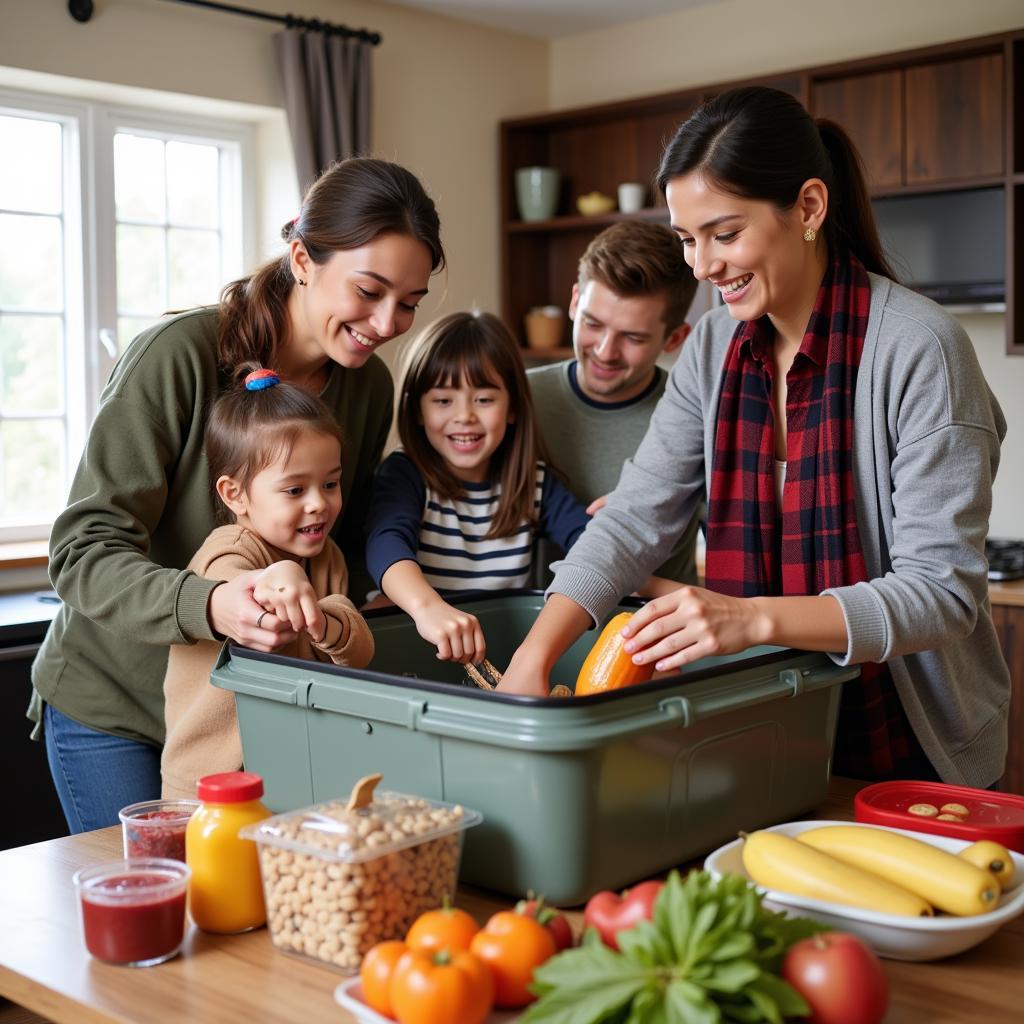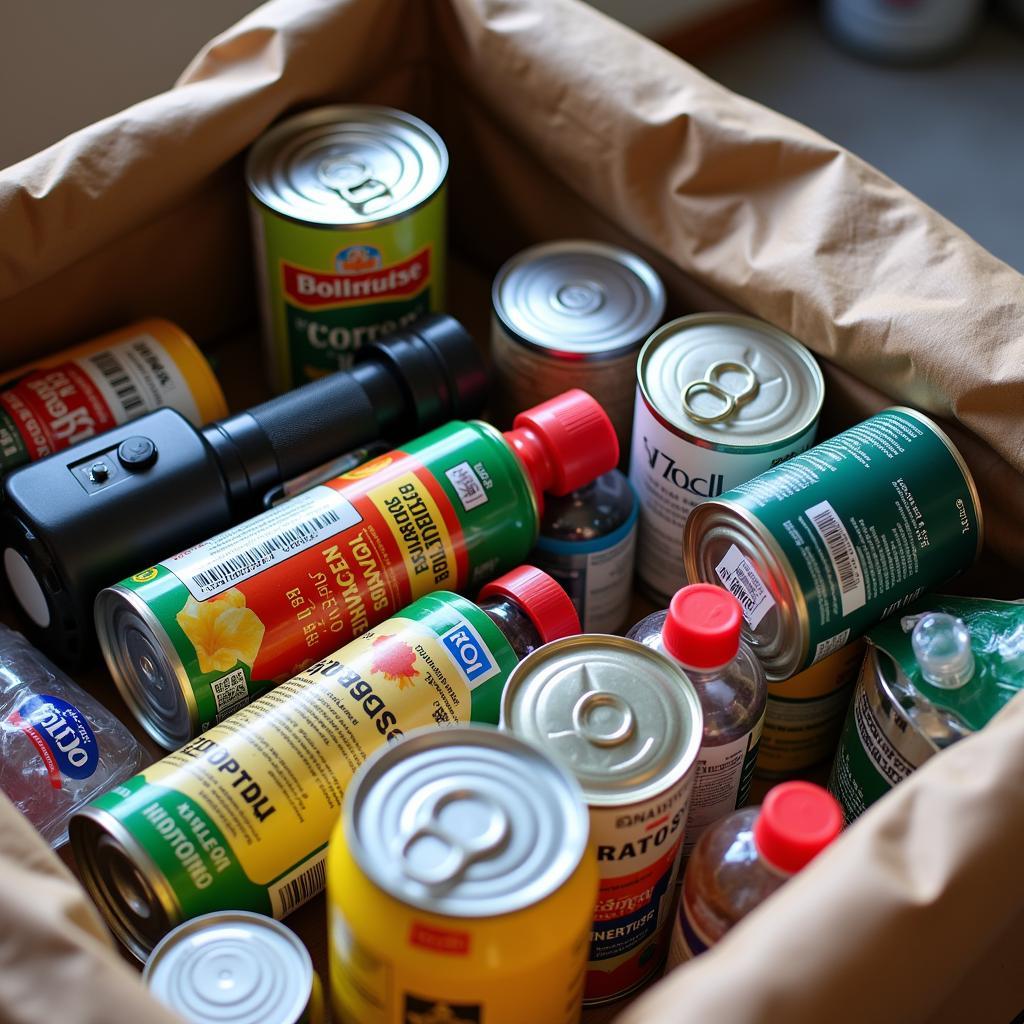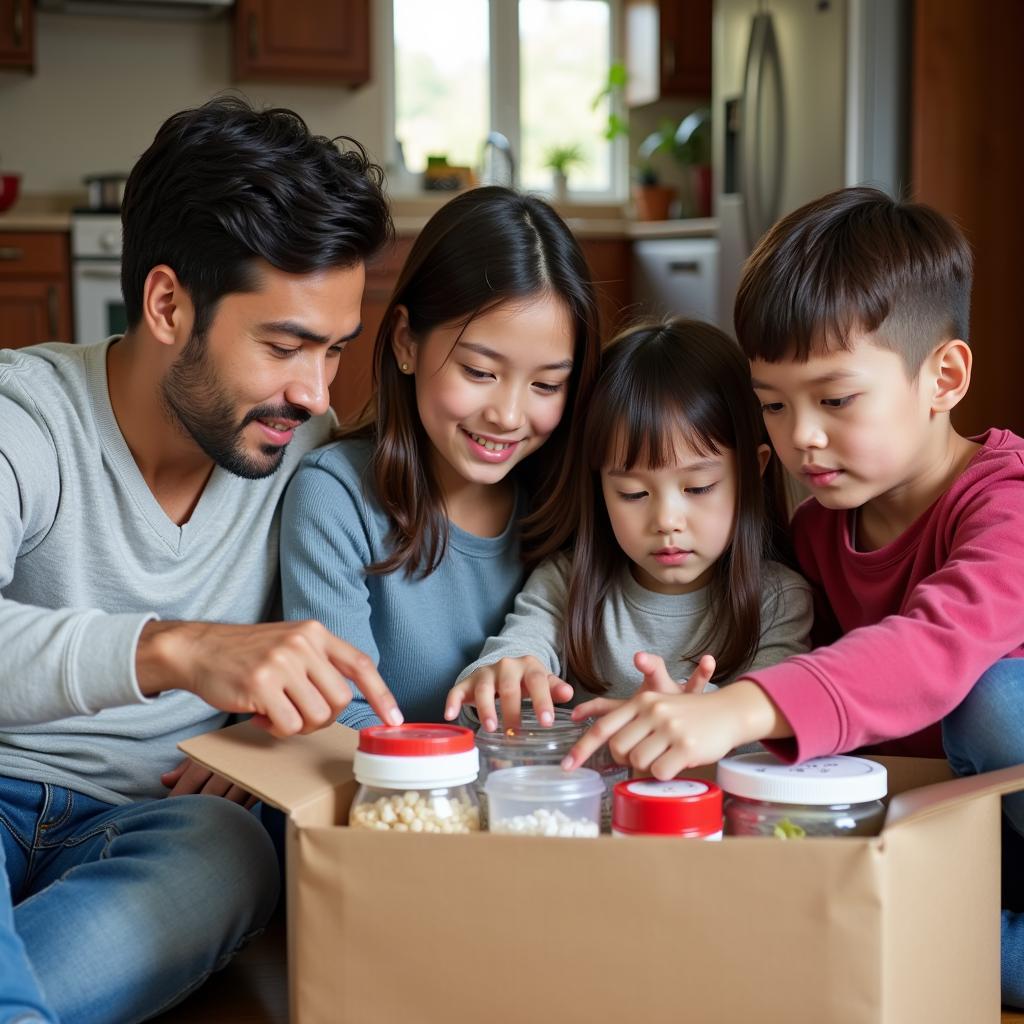Imagine this: a natural disaster strikes, leaving you with no power, no access to fresh food, and limited resources. It’s a scenario none of us want to face, but being prepared can make all the difference. That’s where Disaster Food Kits come in – your lifeline to safety and peace of mind in times of crisis.
Why are Disaster Food Kits Essential?
In the aftermath of a natural disaster or emergency, access to basic necessities like food and water can be severely disrupted. Grocery stores may be closed, supply chains interrupted, or roads impassable. Having a well-stocked disaster food kit ensures you and your loved ones have enough sustenance to weather the storm.
 Family preparing a disaster food kit
Family preparing a disaster food kit
Building Your Disaster Food Kit: A Step-by-Step Guide
Creating a disaster food kit doesn’t have to be overwhelming. Here’s a simple guide to get you started:
- Choose Your Container: Select a sturdy, waterproof container that’s easy to carry and store. Plastic bins or large backpacks work well.
- Stock Up on Non-Perishable Foods: Opt for items with a long shelf life that require minimal to no preparation. Think canned goods, energy bars, dried fruit, nuts, and ready-to-eat meals.
- Don’t Forget Water: Include at least one gallon of water per person per day for drinking and sanitation.
- Essential Supplies: Add a can opener, utensils, a first-aid kit, a flashlight, and a battery-powered radio to your kit.
- Special Considerations: If you have dietary restrictions, allergies, or infants and toddlers, ensure your kit includes appropriate food and supplies.
 Essential items for a disaster food kit
Essential items for a disaster food kit
How Long Should Your Food Supply Last?
Experts recommend having enough food and water to last at least three days, ideally a week or longer. Remember, it may take time for emergency services to reach you or for stores to reopen after a major event.
“Having a plan and being prepared can significantly reduce stress and anxiety during a crisis,” says Dr. Emily Carter, a disaster preparedness expert. “A disaster food kit provides a sense of security and control when you need it most.”
Maintaining Your Disaster Food Kit:
- Regularly Check Expiration Dates: Rotate your food and water supplies every six months to ensure freshness.
- Store in a Cool, Dry Place: Heat and moisture can shorten the shelf life of your supplies.
- Keep It Accessible: Store your kit in an easily accessible location so you can grab it quickly in an emergency.
 Family reviewing their disaster food kit
Family reviewing their disaster food kit
Conclusion
Preparing for the unexpected is crucial, and having a well-stocked disaster food kit is an essential part of that preparation. By taking the time to create and maintain your kit, you’re investing in the safety and well-being of yourself and your loved ones. Remember, being prepared empowers you to face challenges with confidence and resilience.
For expert advice and personalized assistance in creating your disaster food kit, contact us at Phone Number: 02437655121, Email: minacones@gmail.com Or visit us at: 3PGH+8R9, ĐT70A, thôn Trung, Bắc Từ Liêm, Hà Nội, Việt Nam. Our dedicated customer support team is available 24/7 to assist you.